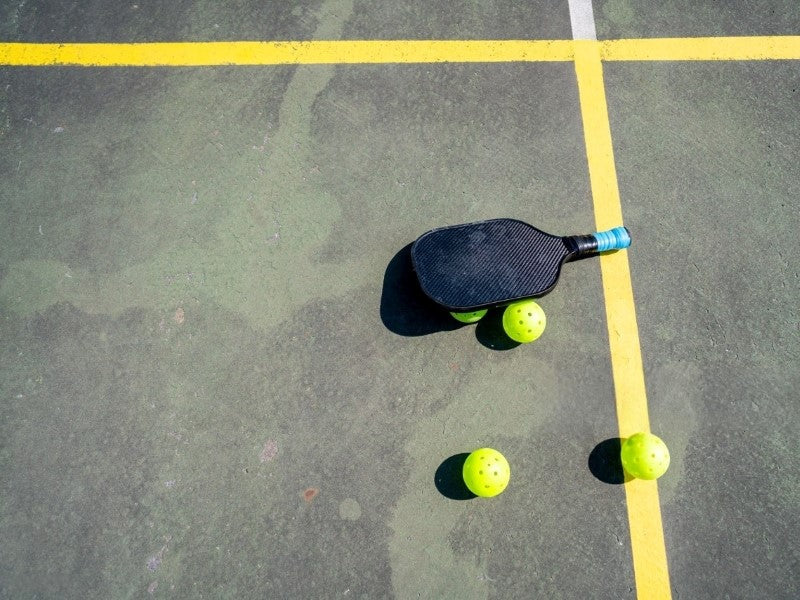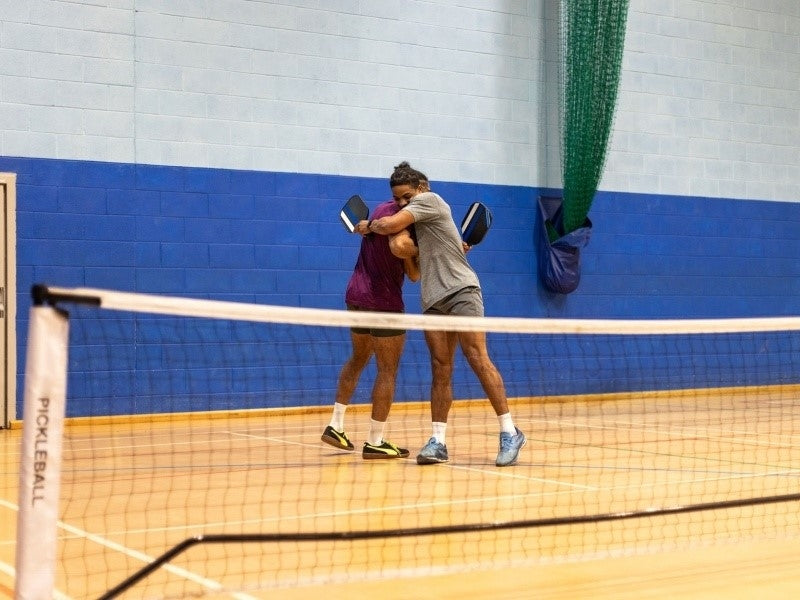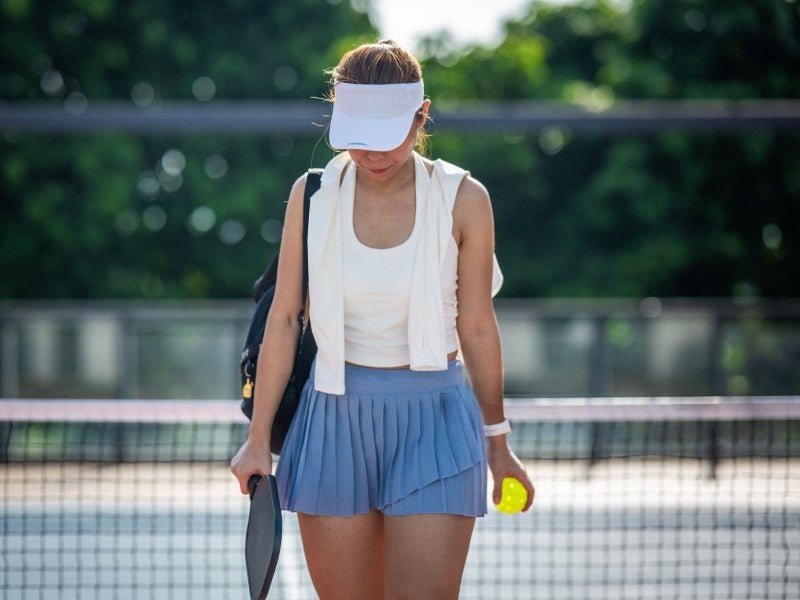In the world of pickleball, few shots are as misunderstood—yet as essential—as the dink. If you're new to the sport, you might have heard players say, "It’s a dink game," or "Win at the kitchen, win the game." But what exactly is a dink in pickleball, and why is it considered a fundamental shot for both beginners and professionals?
A dink is a soft, controlled shot that arcs just over the net and lands in the opponent’s non-volley zone (NVZ), also known as the kitchen. The goal is to make the ball unattackable, forcing a patient rally and setting up for an eventual mistake or opening. While it may look simple, mastering the dink requires touch, control, and strategy—not brute force.

What Exactly Is a Dink in Pickleball?
A dink is a short shot executed from near the kitchen line that drops softly into the opponent’s NVZ. Unlike a drive or smash, a dink is not meant to be a winner—it’s a setup shot. When players keep the ball low and difficult to attack, they engage in a “dinking rally,” biding their time for the opponent to err or lift the ball high enough for a finishing shot.
Key Characteristics of a Dink:
Hit softly with a low trajectory
Clears the net by just a few inches
Lands within the kitchen or in its immediate vicinity
Reduces the chance of an opponent hitting an aggressive shot
Dinks are usually executed during doubles play, though they’re also useful in singles matches when approaching the net.
Why Is the Dink So Important?
The dink isn’t merely a skillful shot; it’s a tactical tool. Here’s why it plays such a central role in pickleball:
Controls the Pace of the Game
By slowing the game down, dinks take power out of the equation and place emphasis on patience, positioning, and touch.
Neutralizes Hard Hitters
A soft dink can frustrate aggressive players by not giving them anything to attack. You force them to play your tempo.
Sets Up Attack Opportunities
While a dink itself may not be a winner, it often creates openings. A poorly returned dink can be volleyed for a "put-away" shot.
Promotes Net Dominance
Effective dinking lets you hold your ground at the net, giving you the tactical advantage in both offense and defense.
Dinking Technique: How to Hit the Perfect Dink
Mastering the dink requires more than just a soft touch—it’s a combination of footwork, body control, paddle angle, and timing.
1. Grip and Paddle Position
· Use a continental grip or relaxed handshake grip.
· Hold the paddle in front of your torso, with the face slightly angled upward.
· Maintain a loose wrist for better control and touch.
2. Body Position and Footwork
· Stay low with bent knees and a stable base.
· Lean slightly forward, weight on the balls of your feet.
· Step toward the ball with your feet rather than stretching with your arm.
3. Swing Mechanics
· Use a short backswing and push the paddle from low to high.
· Make contact with the ball in front of your body, roughly at knee height.
· Follow through slightly upward and toward the target.
4. Ball Placement
· Aim for the opponent’s forehand or backhand side, depending on which is weaker.
· Try to land the ball just inside the kitchen to limit attack angles.
· Mix up direction and depth to keep your opponent guessing.
Strategic Dinking: When and Why to Use It
During Net Exchanges
When both teams are at the kitchen line, dinking becomes a battle of patience. The aim is to stay in control and outlast the opponent.
After a Drop Shot
If you hit a third shot drop and your opponents are forced to play from low positions, dinking keeps them on the defensive.
To Reset the Rally
When you’re out of position or under pressure, a soft dink can reset the rally and give you time to recover.
To Force Errors
Players who lack patience may try to volley a low dink, resulting in pop-ups, net hits, or foot faults in the kitchen.

Common Dinking Mistakes to Avoid
Even experienced players make errors when dinking. Below are the most common errors and their solutions:
Hitting Too Hard
Overhitting a dink often causes the ball to sail high, giving your opponent an easy smash. Focus on touch, not power.
Standing Too Tall
Standing upright limits your ability to get under the ball. Stay low, with knees bent, for better paddle control.
Reaching Instead of Moving
Reaching for dinks can result in off-balance shots. Always move your feet to maintain stability and ideal contact position.
Being Too Predictable
Dinking to the same spot makes it easy for your opponent to anticipate. Change angles and depth to disrupt their rhythm.
Lifting Your Paddle Too High
Avoid high follow-throughs, which can cause the ball to lift. Keep the motion compact and controlled.
Drill Ideas to Improve Your Dinking
Practice is essential to build consistency and confidence in your dink game. Here are a few popular drills:
1. Cross-Court Dinking
Partner up and dink diagonally across the net. Focus on keeping the ball low and consistent. Try alternating backhand and forehand shots.
2. Straight-On Dink Rally
Stand directly across from your partner and maintain a controlled dink rally. Work on foot positioning and depth control.
3. Moving Dink Drill
One partner moves side to side along the kitchen line while the other tries to place dinks away from them. Great for control and footwork.
4. Dink-Volley Reaction Drill
One player dinks while the other volleys softly to simulate quick net exchanges. Builds reflexes and hand control.
Dinking in Doubles vs. Singles
In Doubles Play
Dinking is more prevalent and strategic in doubles because both teams are at the net. It becomes a cat-and-mouse game to create pop-ups or draw an error.
In Singles Play
Dinks are used more sparingly, often as setup shots after a drop or wide return. Because there's more court to cover, players typically favor deeper shots—but a well-placed dink can still surprise your opponent and set up a winning angle.
When to Stop Dinking and Attack
A common mistake is dinking endlessly. Advanced players learn to recognize when to switch from patient dinking to aggressive play.
Look to Attack When:
Your opponent lifts the ball high over the net
Their feet are moving or out of position
The ball lands short with no spin or depth
Transitioning from dink to drive at the right moment can win you the point and break a long stalemate at the kitchen.
FAQs About Dinking in Pickleball
1. Is it possible to execute a dink while standing behind the kitchen line?
Yes, and it’s often encouraged. You should stand just behind the kitchen line (non-volley zone line) when executing a dink. Hitting from inside the kitchen is legal only if the ball bounces first, but staying behind the line reduces the risk of committing a foot fault during dinking exchanges.
2. In what way does a dink differ from a drop shot?
A drop shot—especially the third-shot drop—is typically hit from near the baseline and lands in the kitchen. A dink, on the other hand, is hit from the non-volley zone line and stays within the kitchen. Both are soft shots, but the drop shot transitions you to the net, while the dink keeps you in control once you’re already there.
3. Can you volley a dink in pickleball?
Yes, you can volley a dink, but only if you’re outside the kitchen. Stepping into the kitchen or making contact with the NVZ line during a volley results in a fault. That’s why most players wait for the ball to bounce before hitting it back during a dinking rally.
So, what is a dink in pickleball? It’s much more than a soft shot—it’s a core part of strategy, technique, and point construction. Whether you're a beginner learning the fundamentals or an intermediate player looking to gain an edge, developing your dink will dramatically improve your control, patience, and consistency on the court.
In a sport where power alone doesn’t guarantee success, the dink is a thinking player’s tool. Master it, and you’ll find yourself outlasting opponents, forcing errors, and setting up the perfect put-away.









Leave a comment
This site is protected by hCaptcha and the hCaptcha Privacy Policy and Terms of Service apply.